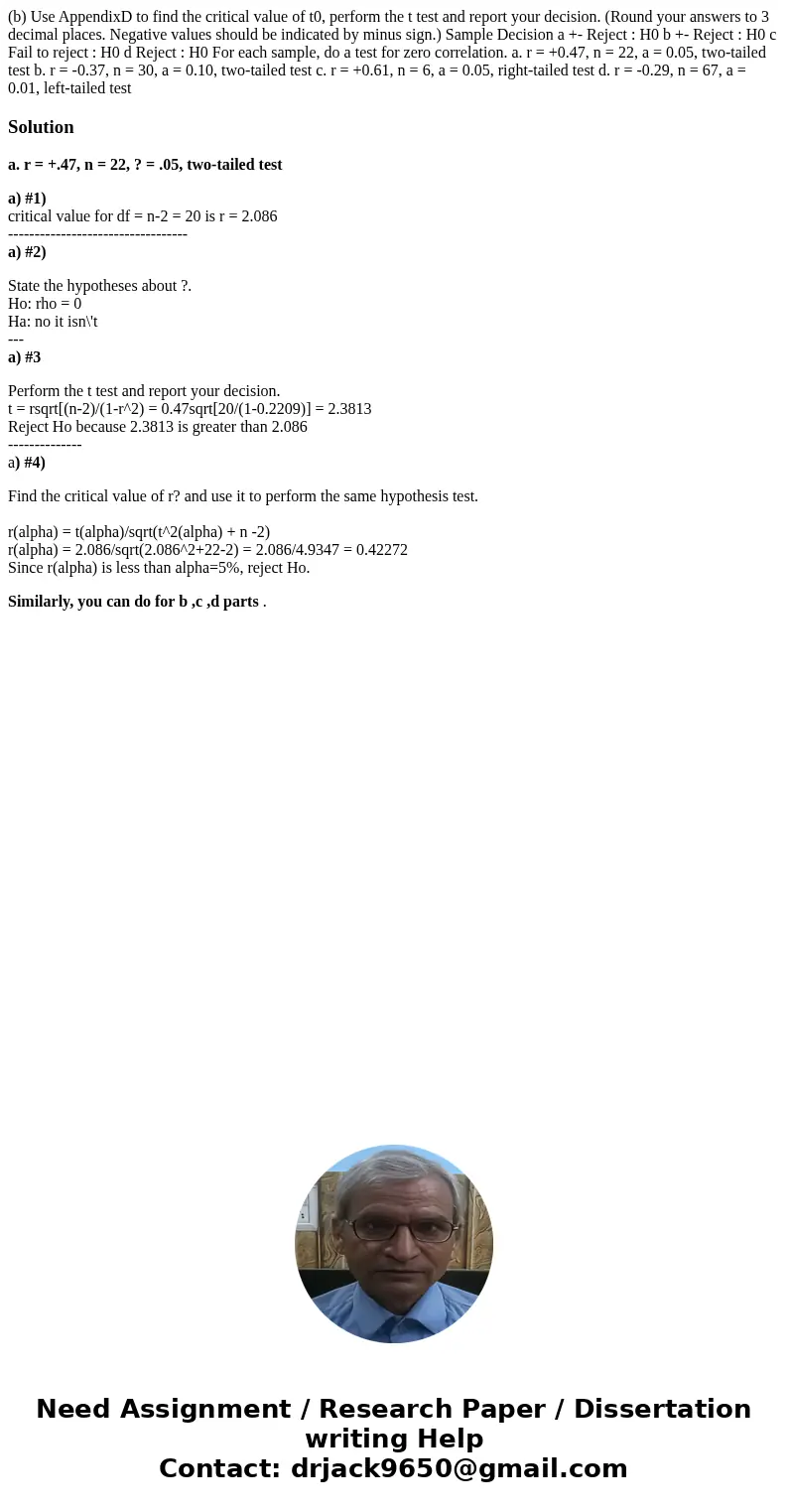b Use AppendixD to find the critical value of t0 perform the
(b) Use AppendixD to find the critical value of t0, perform the t test and report your decision. (Round your answers to 3 decimal places. Negative values should be indicated by minus sign.) Sample Decision a +- Reject : H0 b +- Reject : H0 c Fail to reject : H0 d Reject : H0 For each sample, do a test for zero correlation. a. r = +0.47, n = 22, a = 0.05, two-tailed test b. r = -0.37, n = 30, a = 0.10, two-tailed test c. r = +0.61, n = 6, a = 0.05, right-tailed test d. r = -0.29, n = 67, a = 0.01, left-tailed test 
Solution
a. r = +.47, n = 22, ? = .05, two-tailed test
a) #1)
critical value for df = n-2 = 20 is r = 2.086
----------------------------------
a) #2)
State the hypotheses about ?.
Ho: rho = 0
Ha: no it isn\'t
---
a) #3
Perform the t test and report your decision.
t = rsqrt[(n-2)/(1-r^2) = 0.47sqrt[20/(1-0.2209)] = 2.3813
Reject Ho because 2.3813 is greater than 2.086
--------------
a) #4)
Find the critical value of r? and use it to perform the same hypothesis test.
r(alpha) = t(alpha)/sqrt(t^2(alpha) + n -2)
r(alpha) = 2.086/sqrt(2.086^2+22-2) = 2.086/4.9347 = 0.42272
Since r(alpha) is less than alpha=5%, reject Ho.
Similarly, you can do for b ,c ,d parts .

 Homework Sourse
Homework Sourse